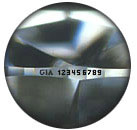 Diamond laser inscriptions are a growing trend for a technique that provides an easy way to identify a diamond. Without causing any damage, a micro-laser beam is used to etch a microscopic inscription on the girdle of diamonds weighing 0.18 carat or more. Laser inscriptions usually contain the certification laboratory initials and the certifications number.
Diamond laser inscriptions are a growing trend for a technique that provides an easy way to identify a diamond. Without causing any damage, a micro-laser beam is used to etch a microscopic inscription on the girdle of diamonds weighing 0.18 carat or more. Laser inscriptions usually contain the certification laboratory initials and the certifications number.
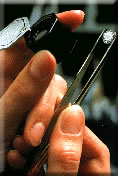 For an additional fee, the unique GIA Report Registry number can be micro-laser inscribed onto the diamond’s girdle (thin outer edge). This unique number provides added security to the diamond’s owner. The number or wording is permanently registered in GIA’s archive database.
For an additional fee, the unique GIA Report Registry number can be micro-laser inscribed onto the diamond’s girdle (thin outer edge). This unique number provides added security to the diamond’s owner. The number or wording is permanently registered in GIA’s archive database.
Laser inscriptions are a nice feature when a diamond owner takes a ring in to get it cleaned, repaired or put in a new mounting because it helps to ensure they get the same diamond back that they brought in. This is especially important for high clarity diamonds that have no inclusion “fingerprints” visible with a 10x loupe.
Fewer Expensive Diamonds are Inscribed
Most laser inscribed diamonds are less than a carat in weight. While it seems like bigger, more expensive diamonds would be the ones to be laser inscribed; there are several reasons why it tends to be the smaller diamonds that are laser inscribed.
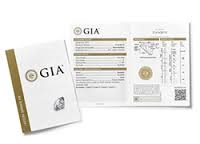 1) There are two types of GIA certifications, the Diamond Dossier that does not have a plot map but is always laser inscribed and the Diamond Grading Report that does contain the plot map. Both certifications use the same standards but the Diamond Dossier was designed for smaller diamonds where the plot maps are not as critical. As a result, many smaller diamonds are certified with the Diamond Dossier and therefore are laser inscribed. The wholesaler has to pay an extra fee to have the diamond laser inscribed with the Diamond Grading Report.
1) There are two types of GIA certifications, the Diamond Dossier that does not have a plot map but is always laser inscribed and the Diamond Grading Report that does contain the plot map. Both certifications use the same standards but the Diamond Dossier was designed for smaller diamonds where the plot maps are not as critical. As a result, many smaller diamonds are certified with the Diamond Dossier and therefore are laser inscribed. The wholesaler has to pay an extra fee to have the diamond laser inscribed with the Diamond Grading Report.
2) The primary reason that larger, more expensive diamonds are not laser inscribed is that the wholesaler is trying to protect his investment if the grading was not accurate. Since the laser inscription is done before the wholesaler knows what color and clarity grade the diamond will get, it permanently ties that diamond to the certification. Color and clarity grading is a judgment call made by humans. If the laboratory diamond grader had a bad day and mistakenly assigns a grade too low for color and clarity for a 0.7 carat diamond, the wholesaler has lost several hundred dollars in profit. However, if the grade misses a color and clarity grade with a 2 or 3 carat diamond, the wholesaler could be losing tens of thousands of dollars in profit. Therefore, the wholesaler tends not to laser inscribe bigger diamonds so they can keep the option open to send the diamond back to the grading laboratory if they do not like the original grading.
3) A third reason that wholesalers do not laser inscribe larger diamonds is that it reduced the retail market they can sell to. Many jewelry stores sell diamonds without showing the customer a certification so they can exaggerate the color and clarity grades. This is especially true of diamonds they set in rings so it is hard to measure the carat weight, color and clarity. Many jewelry stores make their living selling diamonds advertised as G/H color but are really J, K or L color. If the diamond is laser inscribed, the customer would ask to see the certification and the retailer could not exaggerate. When the diamond is not laser inscribed, the retailer can simply exaggerate the color and clarity. The consumer never knows it was certified but at a much lower grade. If there is no laser inscription, the store can make up it own documentation and give it a name like “Certificate of Authenticity” or “Appraisal Report” with the hope that the less knowledgeable customers will think it is a certification.
Most diamond wholesalers do not list whether a diamond is laser inscribed in their inventory listings so we have to check the copy of the certification to see if it indicated laser inscription. This brings up the question we often hear which is “Can I get my diamond laser inscribed after I purchase it?” The answer is yes, but almost no one does it. While the laser inscription is not very expensive (about $50), it is expensive to ship the diamond insured to the grading laboratory and back. It also takes a several weeks in shipping and processing before the diamond is returned. We suggest getting the diamond laser inscribed at the certification laboratory where it was originally graded because the certification needs to be revised to reflect that the diamond in now laser inscribed. There is an additional fee for issuing a revised certification. With the time and money involved in getting a laser inscription on a diamond they purchased that is already certified, most clients opt not to get it done.
Personalized Inscription
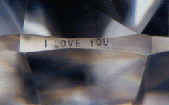 Since almost any short message can be inscribed on the diamond, some consumers want personalized messages for their diamond. Anything from initials, wedding date, “I Love You” to a bible verse can be inscribed (up to about 15 characters). While diamonds are usually given as lifelong gifts, many diamonds end up being sold when the ring is upgraded in the future or the relationship fails to be as forever as the diamond.
Since almost any short message can be inscribed on the diamond, some consumers want personalized messages for their diamond. Anything from initials, wedding date, “I Love You” to a bible verse can be inscribed (up to about 15 characters). While diamonds are usually given as lifelong gifts, many diamonds end up being sold when the ring is upgraded in the future or the relationship fails to be as forever as the diamond.
While a certification number or “I Love You” will generally be considered a positive, a personalized inscription can make resale more difficult. Would your sweetheart want a diamond that has “James Loves Lucy” inscribed on it? If not, neither will most potential buyers.
Diamond Identification
A laser inscription is good for identification purposes. For example, when you bring your diamond into a jewelry store for a cleaning or repair work, you can look at the laser inscription before leaving with your diamond to be sure it is your diamond you got back. Repair shops like laser inscribed diamonds because one of their biggest concerns is that your diamond has been switched before it is brought to them and they will get blamed for the switch if you or they discover it. With a laser inscription, the finger pointing can be eliminated and all parties are more comfortable.
Keep in mind that this is not the best way to identify a diamond. Inscription can be easily polished out or created on another stone. A laser inscription can be polished off pretty easily if a diamond is stolen or some other scenario. Any store that buys a laser engraving machine can put any inscription they want on any diamond. As a result, if your diamond is stolen do not expect the laser inscription to help you recover your diamond.
Most jewelers can be trusted not to engage in stone-switching but it can happen and does. Keep in mind that this is not always the best way to identify a diamond. There are better ways to identify the diamond e.g. a plot of inclusions. It is good to know what the inclusions in your diamond look like. Show your jeweler or repair person the plot map for your diamond when you take it in and then tell them you would like to compare the diamond under a microscope to match your lab grading report when you get the diamond back from them.
GemPrint
Every diamond has its own visual signature. It’s like a fingerprint – no two are alike
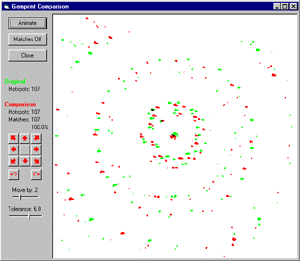
GemPrint uses a non-invasive, low-powered laser to capture the unique sparkle pattern of each diamond and registers this image in its database. The owner receives a registration certificate showing the sparkle pattern along with a detailed description of the stone.
GemPrint doesn’t capture the inclusions like a plot map but records a specific reflection pattern unique for diamonds. Some insurance companies give 10% discount for your diamond insurance if it has been registered with GemPrint (www.gemprint.com)
GemPrint have the same limitation as laser inscription in that it can be altered. If the diamond is ever repolished, its reflection features will be altered and it won’t match old GemPrint record. However it is impossible to create a fake with the same GemPrint pattern. A GemPrint is only as good as the GemPrint Company. Without them being in business, no one else can make use of their records. They have been around for 25+ years but no one knows what the future will bring.
Unlike the laser inscription, the GemPrint is not much help for identification of your diamond in everyday situations (i.e. the jewelry repair shop). Since there is no visible identification without expensive and specialized equipment, GemPrint has limited application unless your diamond is stolen and later recovered which is very unlikely.

